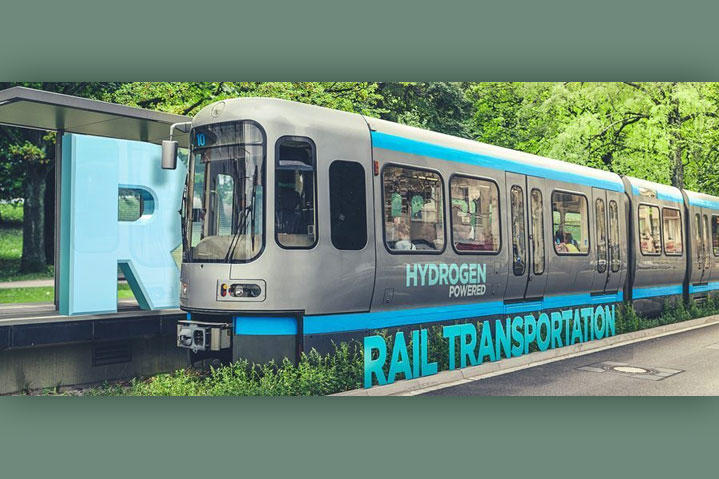Hydrogen A to Z Series: R is for Rail
By: GenH2 Staff
Read Time: 3 minutes
Defining The Hydrogen Economy from A to Z: R is for Rail Transport
Continuing on in our defining the Hydrogen economy from A to Z series, we are revisiting the letter R and discussing Rail Transport.
Railroad history in the United States is nearly as old as the country itself, dating back to the mid-1820s. Rail transportation in the U.S. consists primarily of freight shipments and has the largest rail transport network size of any country in the world. The transport sector is responsible for more than half of global oil demand and around one-quarter of global CO2 emissions from fuel combustion. Therefore, changes in transportation are fundamental to achieving energy transitions globally. As the U.S. and global rail freight market is expected to grow to almost $280 billion in 2026, it is an area being addressed for making positive changes for cleaner fuel alternatives like hydrogen.
The rail transport sector is heading for a major breakthrough in decarbonization. Electric trains currently use diesel engines to generate electricity to power them and now there are initiatives and steps being taken to use hydrogen as the replacement energy carrier for rail and trains. America’s first hydrogen fuel cell train is expected to be operational in San Bernadino, California in 2024. The train is expected to have seating space for 108 passengers and in addition generous standing room. The FLIRT H2 is projected transport passengers with a maximum speed of up to 79 mph (130 km/h) Artikel – Stadler.
Globally in public service in places like Germany and China, hydrogen trains create their own electricity onboard by running hydrogen from a tank and oxygen from the ambient air through a fuel cell. That electricity powers a motor that runs the wheels and on-board “right-sized” battery pack that buffers electricity flow and the only emission is potable water. In addition, the battery on the train can recover energy during braking, which can then be used to boost the train when accelerating.
Rail and trains are a particularly suitable means of developing carbon-free transport in urban areas. Electrifying trains have been done across the U.S. for some time. Therefore, transitioning to hydrogen trains would not always require additional electric infrastructure because they can run on the existing light rail systems in urban areas, decreasing emissions in some of the congested cities. Therefore, hydrogen-powered rail systems in the United States have a path to fruition especially with the first hydrogen powered train being operational in 2024 as stated above.
Global demand for transport is growing fast and hydrogen, and specifically liquid hydrogen to meet those future supply and infrastructure demands is GenH2’s mission and vision for rail and transportation to provide and support efficient mobility.
Please follow us next week as we discuss another R alphabet word, Refrigeration, an essential part of our controlled storage solution for the hydrogen value chain.



